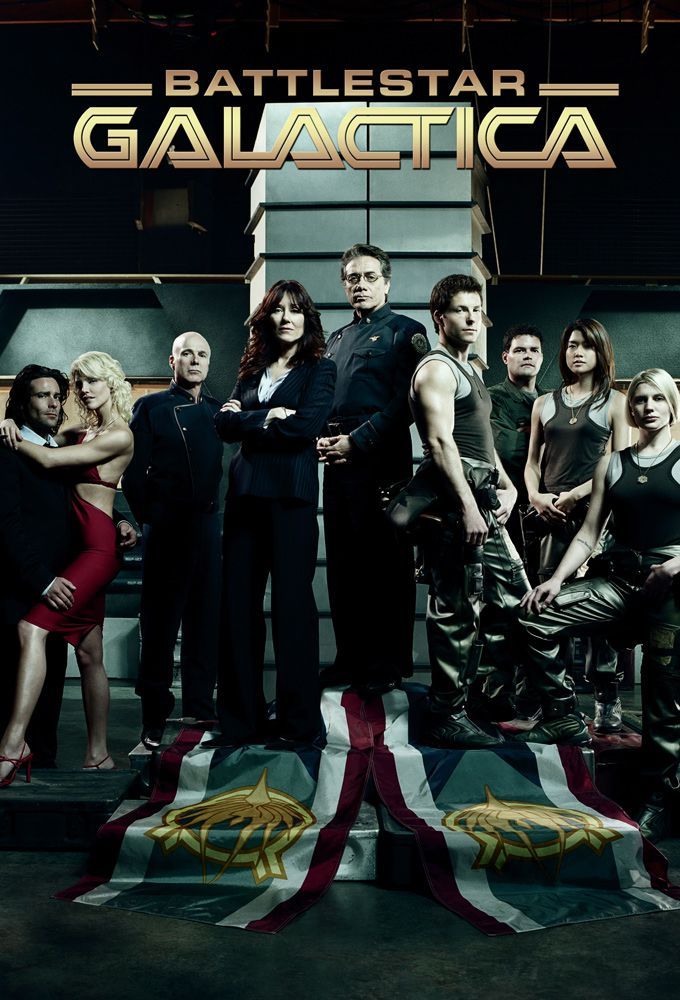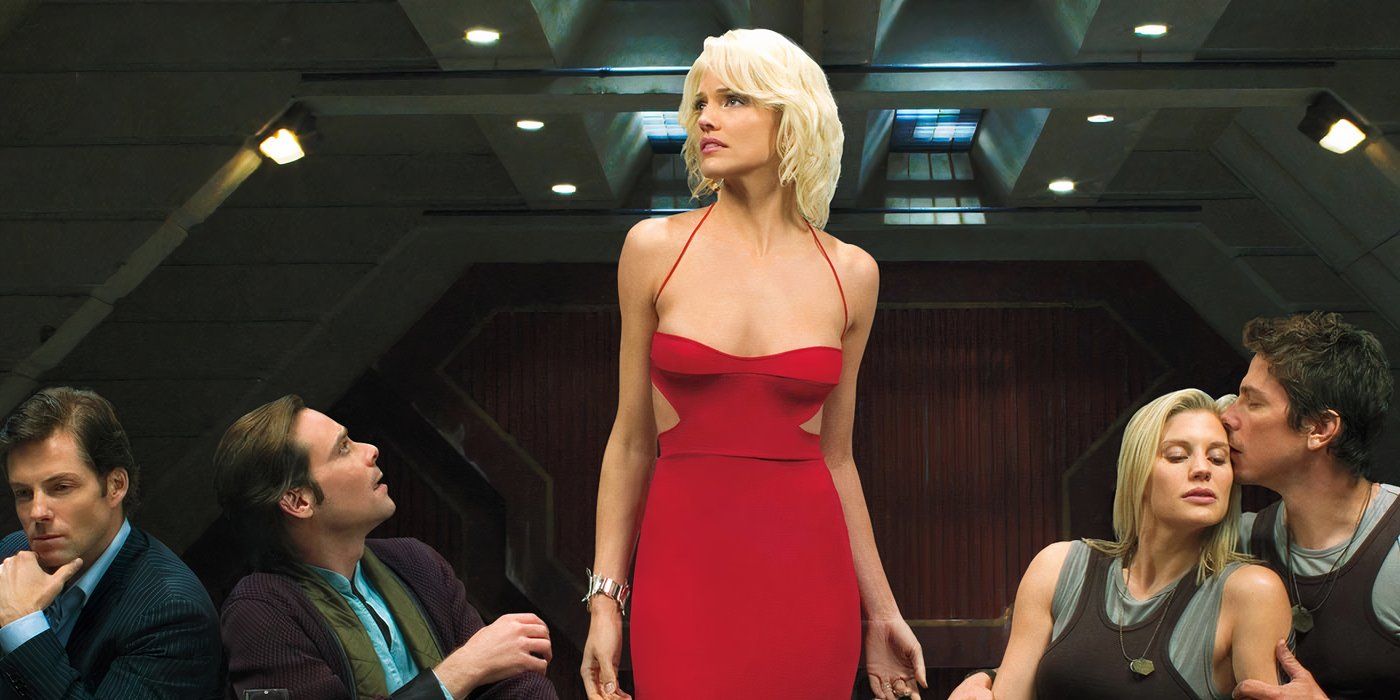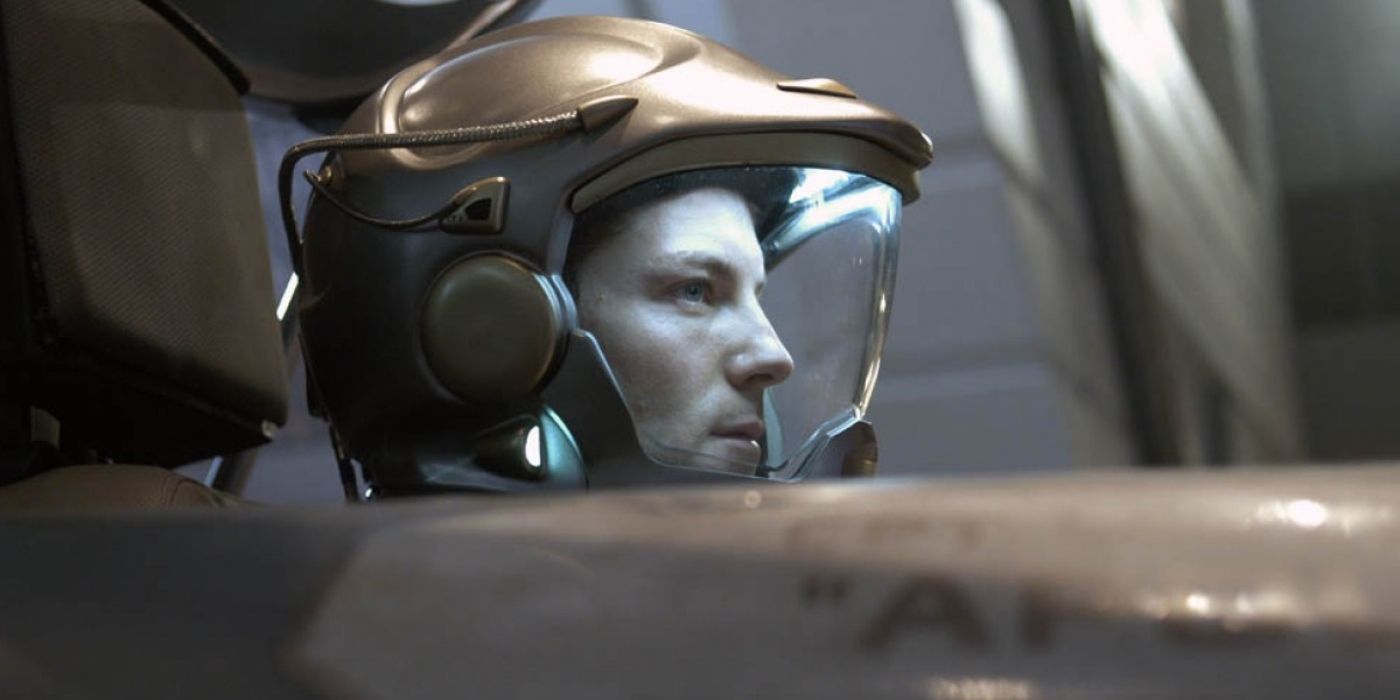The Big Picture
- "33" sets the tense tone of Battlestar Galactica with tight pacing and constant danger.
- The episode introduces key themes like Cylon integration into human society and PTSD.
- "33" secured the show's future by deviating from typical sci-fi tropes, captivating audiences.
Battlestar Galactica is often regarded as a standout in the realm of science fiction shows, as well as a sterling example of how to do a reboot. That's due to a cast that includes Edward James Olmos, Katee Sackhoff, and Tricia Helfer, along with the creative talents of Ronald D. Moore. Moore used Galactica's narrative to serve as commentary on subjects including religion and warfare, with some mixed results — particularly in its final season. But Battlestar Galactica turned out some stellar episodes over the course of its run, particularly its pilot. "33" manages to set up the entire premise of the series while serving as a compelling watch in its own right.

Battlestar Galactica
When an old enemy, the Cylons, resurface and obliterate the 12 colonies, the crew of the aged Galactica protect a small civilian fleet - the last of humanity - as they journey toward the fabled 13th colony, Earth.
- Release Date
- December 8, 2004
- Creator
- Glen A. Larson, Ronald D. Moore
- Cast
- Edward James Olmos , Mary McDonnell , Katee Sackhoff , Jamie Bamber , James Callis , Tricia Helfer , Callum Keith Rennie , Grace Park
- Main Genre
- Sci-Fi
- Seasons
- 4
"33" Is a Tense Thriller That Sets Up Key Elements of 'Battlestar Galactica'
"33" doesn't waste a minute of its runtime, as it quickly establishes that the series' titular ship, the Battlestar Galactica, as well as the rest of the surviving human race, are in constant danger from the sentient robots known as the Cylons. Every 33 minutes, humanity's small fleet of ships must engage their faster-than-light drives and hop to a different part of the universe as the Cylons are constantly hunting them, which leads to the crews suffering from sleep deprivation. Moore and director Michael Rymer build up a fair amount of dread throughout "33," as no one knows how the Cylons are able to track down the fleet or if they'll even be able to stop for some much-needed rest. One subplot involves the pilot Karl "Helo" Agathon (Tahmoh Penikett) attempting to outrun Cylon soldiers on the abandoned world of Caprica; compounding Agathon's plight is the fact that Caprica is irradiated by a nuclear attack.
"33" also sets up key themes that recur throughout Battlestar Galactica. Chief among them is the fact that the Cylons have already integrated themselves into human society. Gaius Baltar (James Callis) is haunted by the Cylon Number Six (Helfer), who manipulated him into playing a key role in the Cylons' attack on the Twelve Colonies. Six tells Baltar that God has a plan for him, a hint at the religious themes that recur throughout the series. There's also the ever-shifting nature of trust. While Agathon is eventually rescued from Caprica by Sharon Valerii (Grace Park), he is unaware that she is a Cylon sleeper agent pretending to be his fellow Galactica pilot; this leads to friction with the rest of the crew in future episodes, after Sharon's identity as a Cylon is eventually uncovered. Even the toll of war is addressed, with Olmos and other cast members studying the effects of sleep deprivation so that they could give the most authentic performances in the episode.
The Development of "33" Secured 'Battlestar Galactica's Future
Moore came up with the concept of "33" when he wrote down a list of storylines to explore in Battlestar Galactica. After a discussion with producer David Eick, they decided that "33" would be the best way to start the series. On the audio commentary for the episode, Eick mentioned that he feels "33" is what convinced the then-SyFy channel to pick up the series, especially as it veered away from the tropes of other sci-fi shows like Star Trek and Stargate. It also cemented Rymer as a go-to director for drama; he'd apply the same sense of unease to his other directorial efforts, particularly episodes of Hannibal and The Man in the High Castle.
It wasn't all smooth sailing though. One of the biggest bombshells in "33" concerns the ship Olympic Carrier, which falls behind during one of the fleet's FTL jumps and reappears with a Cylon fleet in tow. Commander Adama (Olmos) and President Laura Roslin (Mary McDonnell) make the tough call to have their pilots gun the Carrier down when they learn that it's been stocked with nuclear weapons. Moore originally wrote that the Carrier still had people on board when it was destroyed, but he started butting heads with SyFy, as the network felt that this was too dark of an ending. The end result sees Lee "Apollo" Adama (Jamie Barber) flying by the Carrier, without any confirmation that there's still a living crew.
Despite some fans feeling that Moore should have kept his original ending, what ended up on-screen plays perfectly into the moral ambiguity that Galactica would embrace during its run. Moore was also requested to end the pilot on a happier note, rather than on Helo's rescue; he chose to reveal that a baby boy was born. The single act of Roslin marking down this birth on a whiteboard is just as cathartic as any space fight or slain Cylon, and highlights the perseverance of the human spirit that makes Galactica a compelling series.
‘33’ Is a Perfect Jumping-On Point for ‘Battlestar Galactica’
A great pilot has to accomplish several goals — it must set up the series' premise and the cast of characters while also providing a standalone story. "33" accomplishes all this and more. It highlights the threat of the Cylons while also putting the human characters through the wringer. "33" also establishes several key relationships, from the friendship between Adama and Commander Saul Tigh (Michael Hogan) to the complex dynamic between Baltar and Six.
What makes this even more impressive is that there was a Battlestar Galactica miniseries that premiered prior to the series proper in 2003. The miniseries is technically the beginning of the show; it establishes a number of plot points that are also intrinsic to the series — such as the attack that led humanity to flee to the stars, and the revelation of Cylons hiding in plain sight. But "33" works just as well as an intro, whether you watched the miniseries or not. Its mix of spine-tingling tension, moral ambiguity, and science fiction tropes is what came to define Battlestar Galactica as a series, and the upcoming movie reboot should definitely take notice.
Battlestar Galactica is available to stream on Prime Video in the U.S.



